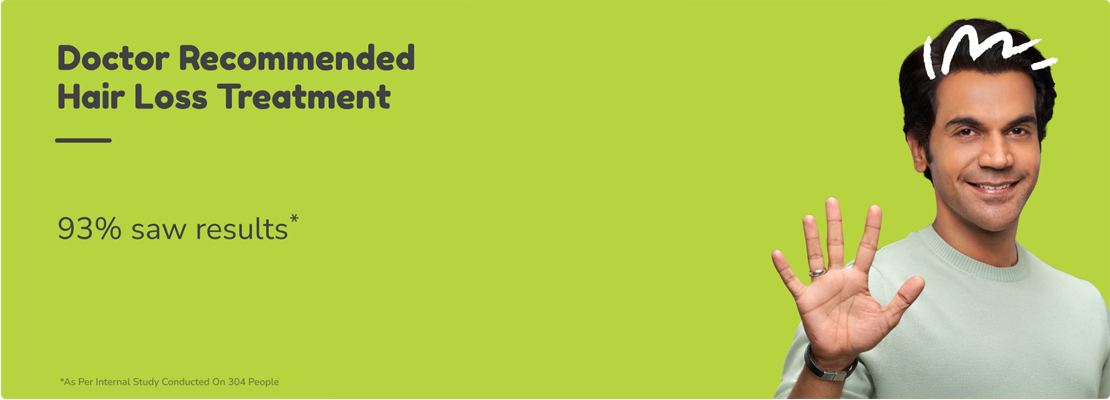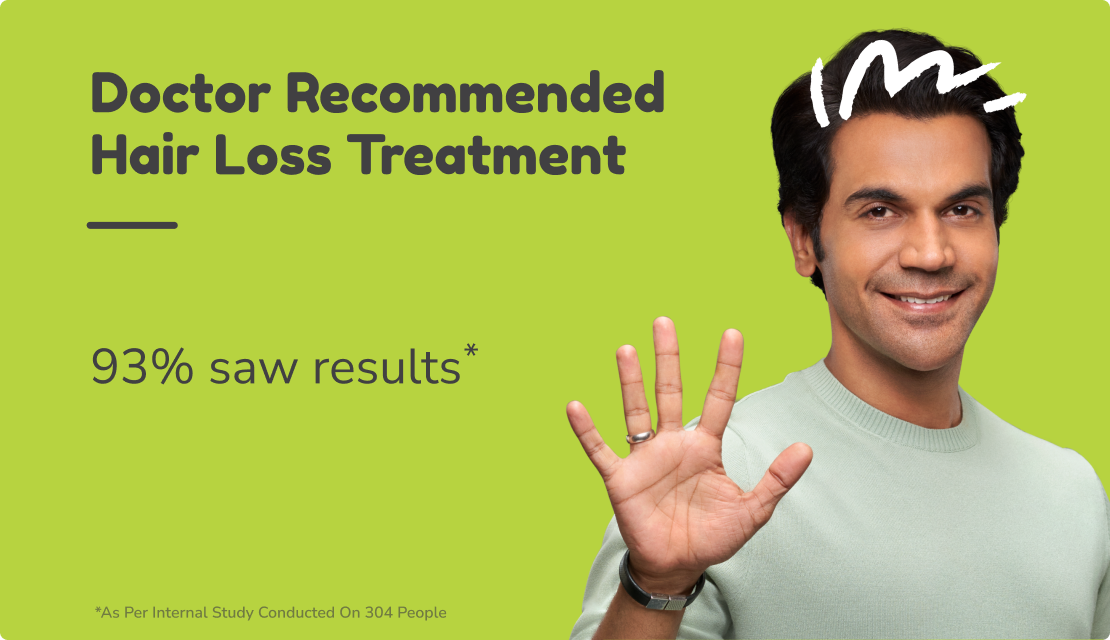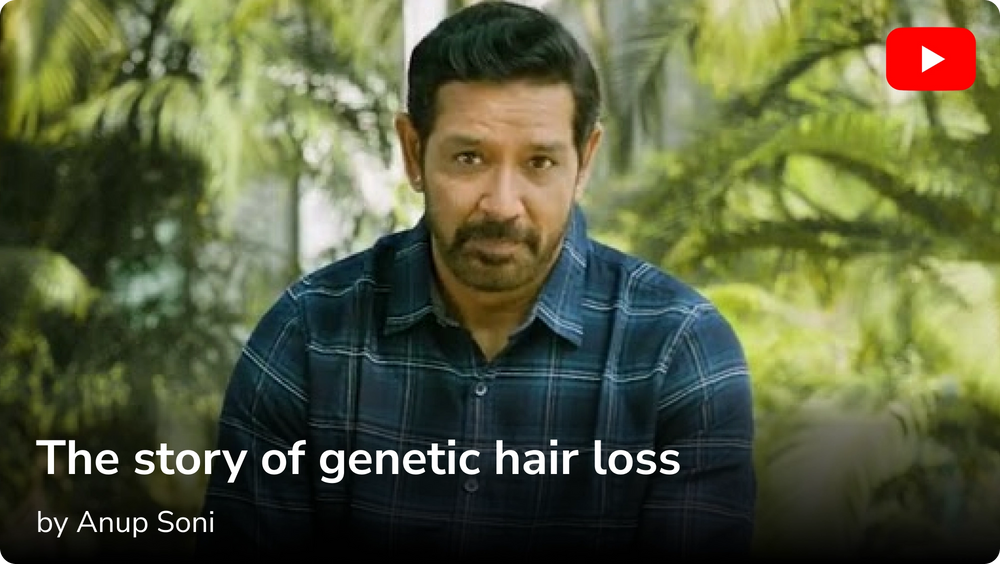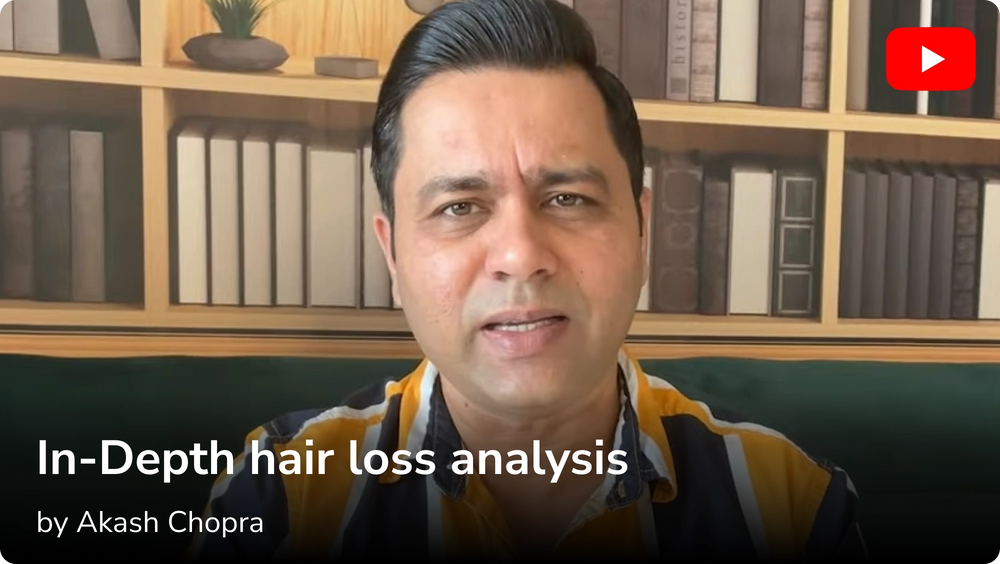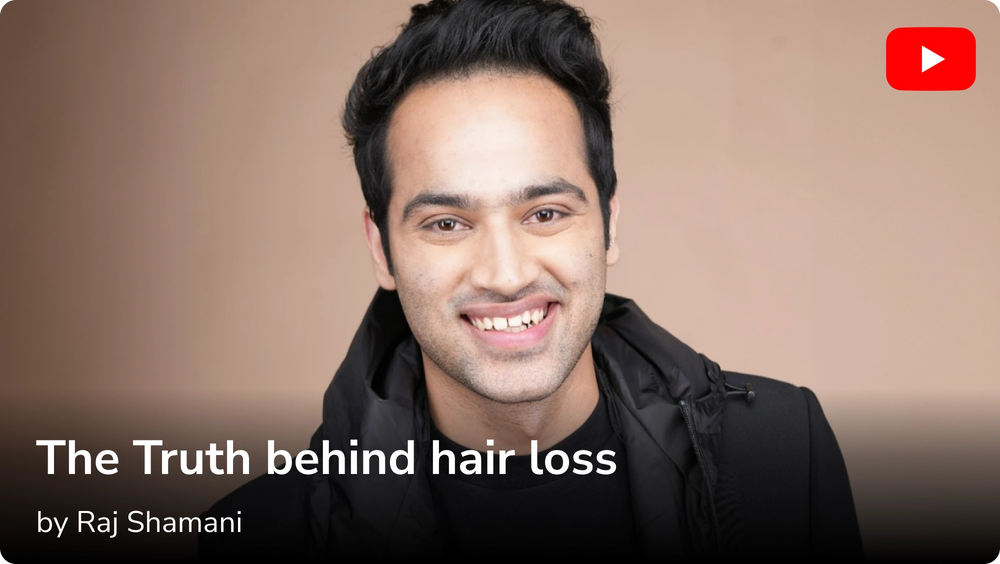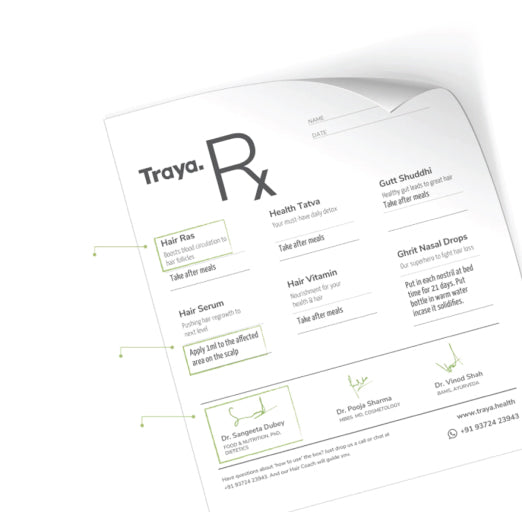Do you remember the time your mother massaged your hair with oil every other day? When getting out of the house with oil in your hair was normal and your hair were thick and strong?
Oil is an important aspect of hair care as it not only nourishes your hair and scalp but also helps in the blood circulation. Our scalp produces natural oils of its own but sometimes it is not enough to give adequate nourishment, leaving hair prone to dryness, breakage, and a lacklustre appearance. Hair oils are important for hair development and maintaining optimal scalp health.
Hair oils are rich in vitamins, antioxidants, and vital fatty acids that permeate the hair shaft and promote strength, resilience, and growth. They not only moisturise and nourish the hair, but they also form a protective barrier, preventing the strands from environmental harm such as pollution and extreme weather. This is why Argan Oil, Castor Oil, Coconut Oil are some of the Best Hair Growth Oils Recommended by Doctor.
Through the blog, let’s understand more about the effectiveness of various oils.
Is Hair Oil Effective in Promoting Hair Growth?
Hair oils, particularly those high in important fatty acids, vitamins, and minerals, give deep sustenance to the hair follicles. This nourishing treatment improves overall hair health and encourages growth by avoiding dryness and breakage. Massaging hair oil into the scalp improves blood circulation. Improved blood flow to the hair follicles guarantees an appropriate supply of oxygen and nutrients, producing a favorable environment for hair development.
Some oils, such as coconut oil, can enter the hair shaft and prevent protein loss. This helps to protect the hair and allows it to grow longer and stronger. Many hair oils have antibacterial properties thus helping in preventing dandruff. Hair oils form a protective barrier around the hair shaft, shielding it from environmental elements such as pollution and UV radiation. This protection can help to prevent hair breakage and allow it to grow naturally.
Understanding Hair Growth and Oils
Hair oils are important in improving overall hair health since they address numerous elements of hair development and maintenance. Hair oils, which are high in critical elements including vitamins, minerals, and fatty acids, nourish the hair and scalp deeply. These nutrients are absorbed by the hair follicles, increasing strength, resilience, and healthy strand development.
Hair oils are important in improving overall hair health since they address numerous elements of hair development and maintenance. Hair oils, which are high in critical elements including vitamins, minerals, and fatty acids, nourish the hair and scalp deeply. These nutrients are absorbed by the hair follicles, increasing strength, resilience, and healthy strand development.
Here are a few benefits of Hair Oils:
- Adds shine and conditions dull hair
- Makes hair less prone to breakage
- Provides Deep Nourishment
- Makes Hair Manageable
- Improve Overall Hair Health
- Increase Strength, Resilience and Healthy Strand Development
- Prevent Damage by forming protective barrier
- Sometimes have Anti-Inflammatory properties
- Can help with Dandruff
- Massaging Oil can increase Blood Circulation
Also Read: How to use a derma roller for hair?
In essence, the numerous advantages of hair oils, such as their nutrient-rich composition, damage prevention capabilities, and anti-inflammatory actions, all contribute to a healthy scalp and vigorous hair development.
Best Hair Growth Oil Recommended by Doctors and Dermatologists
1. Coconut Oil
Widely celebrated for its versatile benefits in hair care, coconut oil excels in penetrating hair strands, preventing protein loss, and moisture retention. Massaging coconut oil into your scalp will improve blood circulation and help in hair growth. Blood circulation promotes the efficient delivery of nutrients to hair follicles, facilitating stronger, healthier strands from the roots.
With its natural richness in essential nutrients, coconut oil is not only a remedy for dry and damaged hair but also serves as a protective layer, enhancing the strength, lustre, and resilience of the hair.
Customer Testimonials

2. Saw Palmetto Oil
Derived from the fruit of the saw palmetto plant, this oil holds significant benefits for hair health. Rich in essential fatty acids, saw palmetto oil plays a pivotal role in blocking the activity of enzymes associated with hair loss, particularly 5-alpha-reductase.
By inhibiting the conversion of testosterone into dihydrotestosterone (DHT), a hormone linked to androgenic alopecia, saw palmetto oil helps maintain a healthier hormonal balance. This contributes to the prevention of hair thinning and supports robust hair growth. Embraced for its natural properties, saw palmetto oil is a valuable addition to hair care routines, offering a botanical solution to those seeking to address issues related to hair loss.
3. Castor Oil
Castor oil, extracted from the seeds of the castor plant, stands out for its rich nourishing properties and exceptional moisturizing capabilities. Packed with fatty acids, particularly ricinoleic acid, castor oil deeply hydrates the scalp and hair, preventing dryness and promoting overall hair health. Its thick consistency forms a protective barrier, locking in moisture and preventing water loss from the hair shaft.
This natural emollient not only moisturizes the scalp, reducing flakiness and irritation but also imparts a lustrous shine to the hair. Regular application of castor oil provides a nourishing boost, enhancing the strength, texture, and resilience of both the scalp and hair.
4. Rosemary Oil
Backed by compelling studies, rosemary oil has emerged as a potent ally in promoting hair regrowth and enhancing scalp health. Research suggests that the topical application of rosemary oil significantly stimulates hair follicles, encouraging new growth and preventing premature hair loss. With its rich content of ursolic acid and rosmarinic acid, rosemary oil demonstrates anti-inflammatory and antioxidant properties, fostering a nourished and revitalized scalp.
These attributes contribute to improved circulation, ensuring that hair follicles receive ample nutrients for optimal growth. Regular use of rosemary oil not only aids in hair thickening but also addresses issues such as dandruff and dryness, making it a valuable natural solution for those seeking to enhance both hair density and overall scalp well-being.
5. Argan Oil
Often referred to as 'liquid gold', Argan oil is a powerhouse of nourishing properties. Rich in fatty acids, vitamin E, and antioxidants, it is extremely beneficial for hair. Argan oil is known for its moisturizing properties, making it ideal for treating dry and frizzy hair. It also helps to protect hair from everyday damage by reducing breakage and split ends and keeping your scalp healthy. Argan oil moisturizes hair without making it appear greasy. It also helps enhance the elasticity of your hair.
6. Jojoba Oil
Jojoba oil is unique in that it closely mimics the natural oils produced by the scalp (sebum). This makes it particularly effective for scalp care, helping to regulate sebum production and maintain a balanced scalp. It is a conditioning agent that makes hair smoother and softer with regular use. It's also known for its moisturizing properties, which can prevent hair breakage and enhance hair thickness.
7. Olive Oil
A staple in many households, Olive oil is not just great for cooking but also for hair care. Known for its rich moisturising properties, olive oil manages frizz and dryness and gives your hair the shine it needs. Hydroxytyrosol present in Olive Oil provides protection against UVB (sun damage) and environmental damage.
It is packed with vitamins A, D, E, and K, and is a fantastic moisturizer for the hair. Olive oil can penetrate the hair shaft and retain moisture, which is beneficial for dry, thick, or frizzy hair. Additionally, it's known to add softness and strengthen the hair.
Customer Testimonials

8. Almond Oil
Rich in vitamin E, fatty acids, proteins, and antioxidants, Almond oil is highly beneficial for hair. It consists of rich fatty acids that help increase the elasticity of your hair. Almond Oil also protects the hair from damage caused by UV rays and pollutants. It nourishes and strengthens hair, and is optimal for treating hair loss and damaged hair. Almond oil's natural moisture-sealing properties help to replenish hair and also improve its shine and vitality.
9. Green Tea Oil
Green tea oil, derived from the leaves of Camellia sinensis, boasts powerful antioxidants that make it a formidable protector for both hair and scalp. Abundant in polyphenols, particularly catechins, green tea oil provides a shield against external damage. These antioxidants neutralize free radicals, mitigating oxidative stress caused by environmental factors.
Regular application helps fortify hair strands, preventing damage from UV rays, pollution, and other stressors. The protective barrier formed by green tea oil aids in maintaining the integrity of the hair and scalp, promoting resilience and contributing to an overall healthier and vibrant appearance.
10. Pumpkin Seed Oil
Pumpkin seed oil, a natural treasure rich in nutrients, plays a pivotal role in promoting hair growth, particularly in cases of androgenic alopecia. Abundant in phytosterols, antioxidants, and essential fatty acids, this oil inhibits the action of 5-alpha-reductase, reducing the conversion of testosterone into dihydrotestosterone (DHT) – a hormone linked to hair loss. By addressing the root cause, pumpkin seed oil supports a healthier hormonal balance, thereby mitigating hair thinning and encouraging the growth of stronger, thicker hair. Regular incorporation of pumpkin seed oil into a hair care routine offers a natural and effective approach for those seeking to combat androgenic alopecia.
Also Read: Best Serum for Hair Growth and Thickness in India
11. Avocado Oil
Rich in monounsaturated fatty acids and biotin, avocado oil is a potent elixir for hair health. The monounsaturated fats deeply moisturize and nourish the hair shaft, preventing dryness and enhancing overall elasticity. Biotin, a B-vitamin, supports the production of keratin, the key structural protein in hair, promoting strength and resilience. Avocado oil's nutrient-rich profile makes it an ideal choice for those aiming to improve the texture, shine, and vitality of their hair.
12. Peppermint Oil
Peppermint oil's invigorating properties extend beyond a pleasant scent, as it excels in increasing blood flow to the scalp. The menthol in peppermint oil stimulates the hair follicles, promoting improved circulation and nutrient delivery. This heightened blood flow encourages hair growth by creating an optimal environment for follicular activity. Additionally, peppermint oil provides a refreshing sensation, contributing to an energised scalp. Regular use of peppermint oil in hair care routines can be a revitalizing and effective strategy for those seeking to enhance blood circulation and promote robust hair growth.
Doctor Recommended Traya Hair Growth Oil for Hair Growth
The Traya Scalp Oil with Growth Therapy Booster Shots is designed to stimulate hair growth by enhancing the health of hair follicles. This hair oil contains a blend of Coconut, Goat Milk, and Wheat Germ, rich in essential fatty acids and vitamins that repair damage caused by factors like environmental pollution and styling products. Ingredients such as Aloe, Amlaki, ORPL, and Camphor work together to improve scalp health by reducing pitta dosha and ensuring optimal nutrient flow to the scalp.
Additionally, herbal elements like Guduchi, Brahmi, and Bhringraj strengthen hair follicles and enhance circulation to the scalp, extending the anagen or growth phase for healthier and longer hair. Each oil offers unique benefits, allowing individuals to tailor their approach to meet specific hair care needs.
Traya’s Nourish Hair Oil is a rich blend of freshly cut herbs and 9 cold pressed oils that seep deeply into the scalp and hair to provide intense nourishment. It has most of the Best Hair Growth Oils Recommended by Doctor like contains rgan Oil, Castor Oil and Rosemary Oil and potent herbs like Amla, Bhringraj, Jatamansi, and Ratanjot infused in the hair oil that slowly release their goodness over time. It also has essential oils such as Argan Oil, Castor Oil and Rosemary Oil that help provide intense moisture lock, promote hair smoothness and give your hair back its ultimate shine.
Also Read: Dermatologist Recommended Shampoo for Dry and Frizzy Hair in India
How to Use Hair Growth Oils Effectively
To maximise the effectiveness of hair growth oils, follow these tips for proper application:
- Choose the Right Oil: Select oils known for promoting hair growth, such as coconut oil, castor oil, argan oil, or jojoba oil or Traya's Nourish Hair Oil which is suitable for all hair types.
- Gently warm the oil before application. This enhances its absorption and improves circulation in the scalp. Use a warm water bath or microwave, but ensure it's comfortably warm, not hot.
- Divide your hair into sections to ensure even application. This is especially important for those with thicker or longer hair.
- Using your fingertips or a cotton ball, apply the oil directly to the scalp. Traya's Nourish oil comes with a nozzle for easy application. Massage in circular motions to stimulate blood flow and distribute the oil evenly.
- After applying to the scalp, distribute the remaining oil through the length of your hair, focusing on the ends. This helps nourish and condition the entire hair shaft.
- For deeper penetration, cover your hair with a shower cap or warm towel. Leave the oil on for at least 30 minutes, allowing the nutrients to be absorbed.
- After the designated time, shampoo and condition your hair as usual. You may need to shampoo twice to remove excess oil.
- Frequency Matters and consistency is key. Apply the hair growth oil treatment 1-2 times a week for optimal results.
Conclusion
In conclusion, harnessing the potential of hair growth oils involves selecting the right ones, warming them for optimal absorption, and applying them methodically to the scalp and hair. Massaging the oils in, covering for absorption, and following up with regular shampooing are essential steps. These oils, rich in nourishing properties, offer a natural and holistic approach to hair care, promoting a healthier scalp and stronger strands. As consistency is vital, make it a habit to incorporate these treatments into your weekly routine. By doing so, you not only nurture your hair but also unlock the transformative benefits these oils bring, leading to a more vibrant and luscious mane. Elevate your hair care regimen with the power of nature's oils for a crowning glory that radiates vitality and beauty.
FAQs
Q. Which oil is suggested by medical professionals for hair care?
Medical professionals may recommend various oils based on individual needs. Common recommendations include coconut oil, jojoba oil, argan oil, and olive oil for their moisturising and nourishing properties.
Q. What is the top-rated product for enhancing hair growth?
The top-rated product for enhancing hair growth can vary, but some products containing minoxidil, an FDA-approved medication, are often recommended. Natural products with essential oils like rosemary, lavender, and peppermint are also popular choices.
Q. What is the most effective oil for enhancing hair growth?
The most effective oil for enhancing hair growth can depend on individual factors. Castor oil, rosemary oil, and pumpkin seed oil are often cited for their potential benefits, but the effectiveness may vary from person to person. Consulting with a healthcare professional can provide personalised recommendations based on specific needs.




